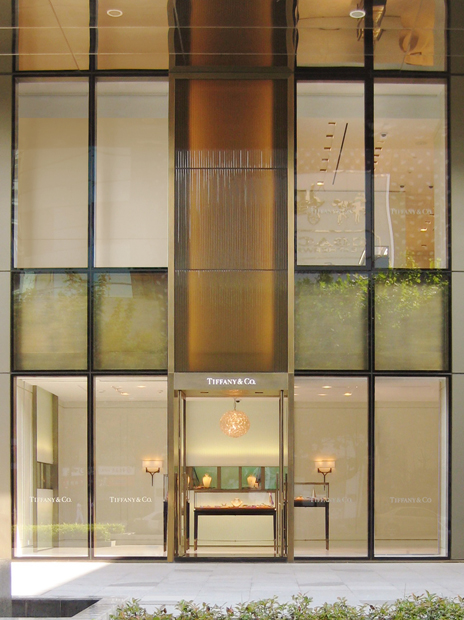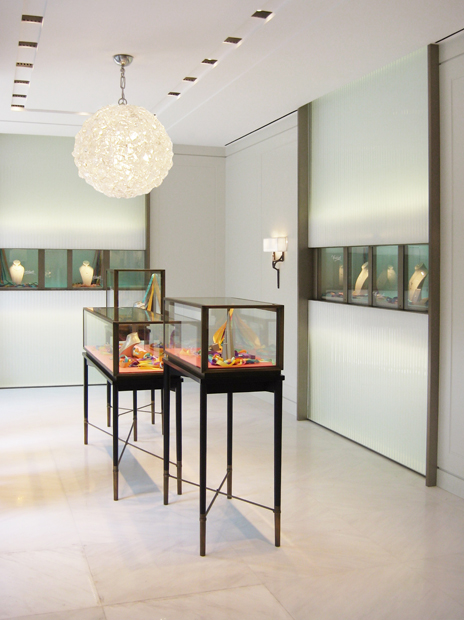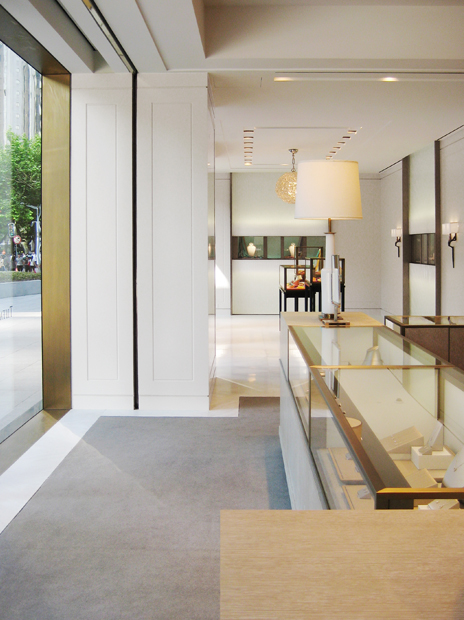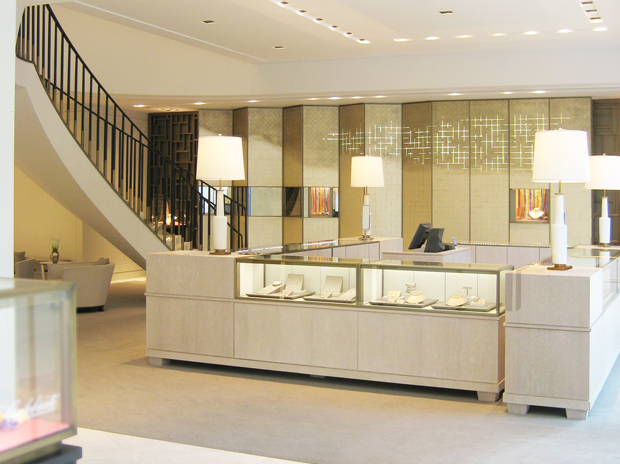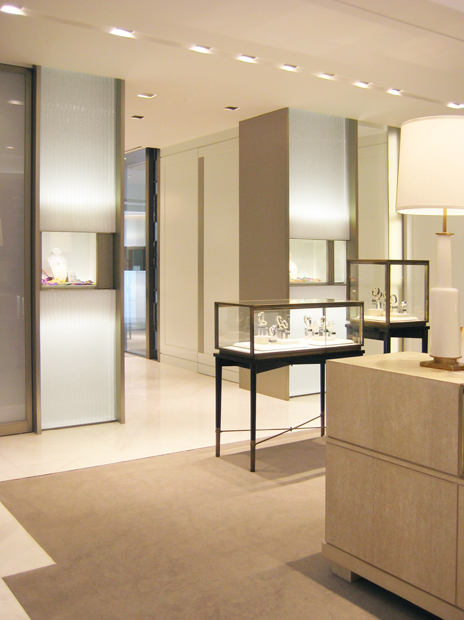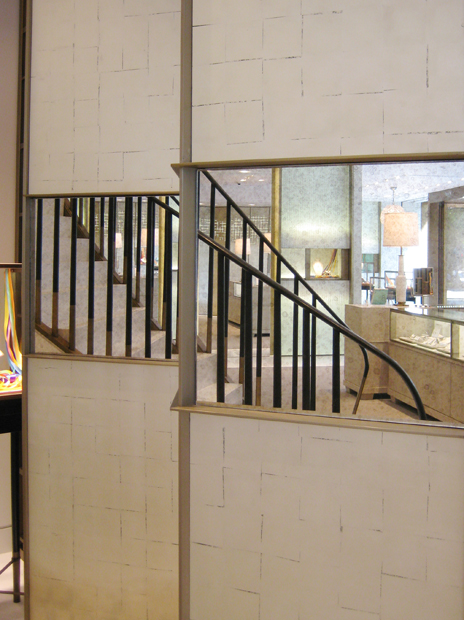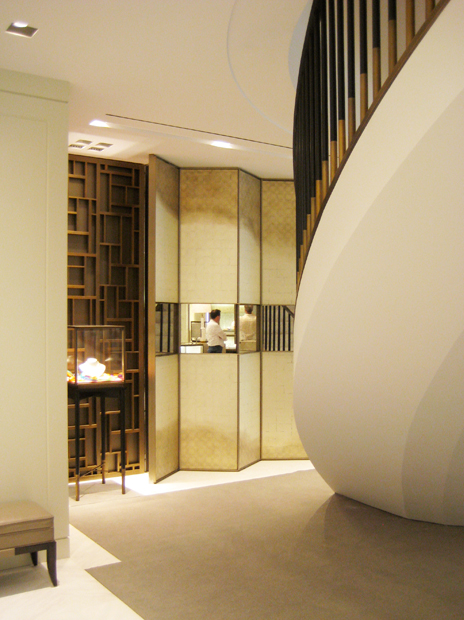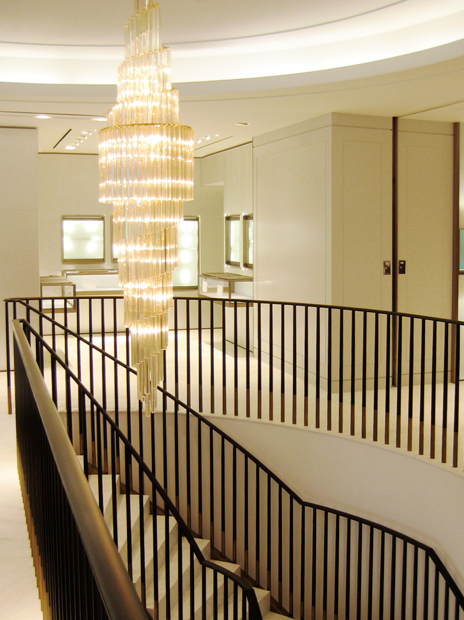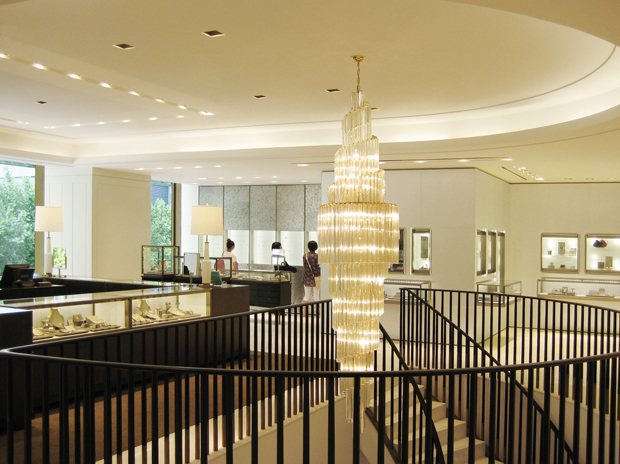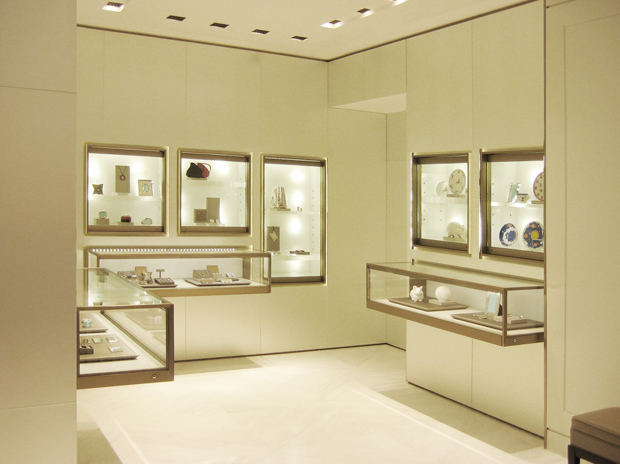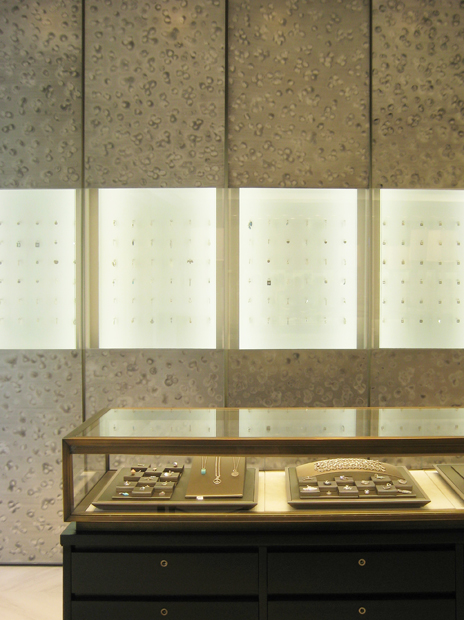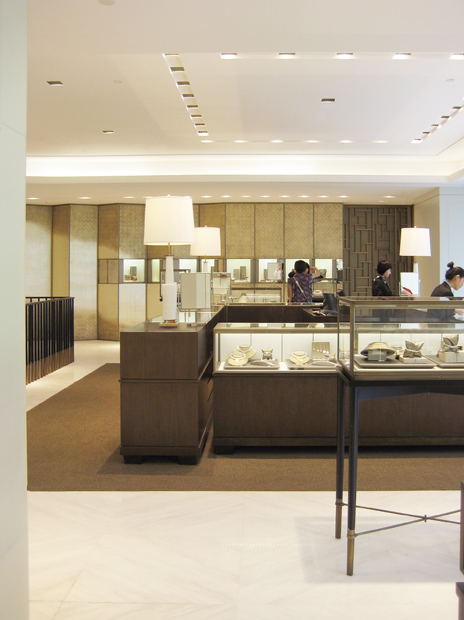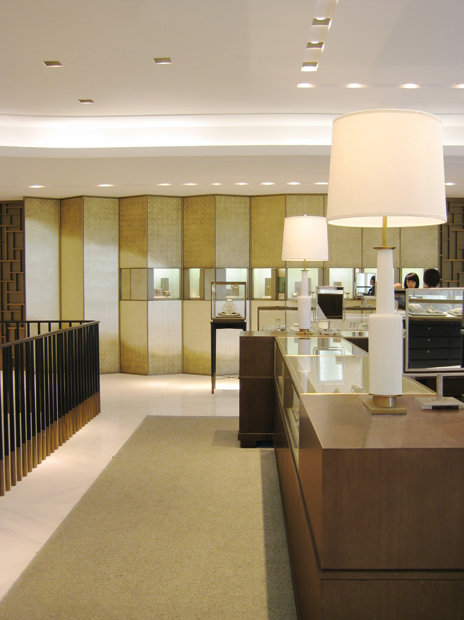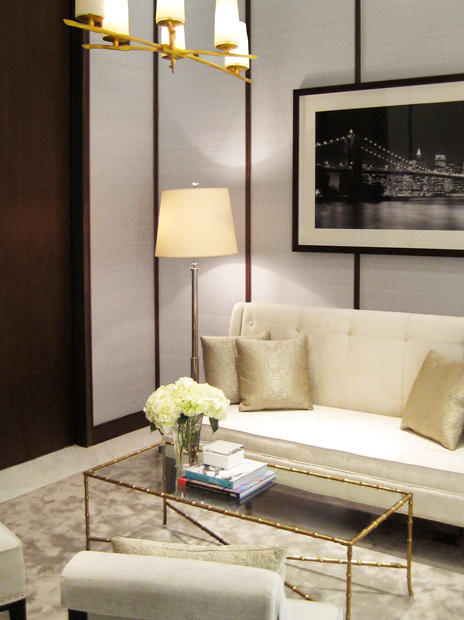Diamonds are one of the most enduring symbols of humanity’s perception and personification of natural beauty. As the world turns, the raw power of geology squeezes black carbon to a brilliant translucency that has come to define luxury in our modern world. Tiffany diamonds, perhaps the most recognizable in the world, have in turn enabled the commodification of an even more fundamental property of our universe - color. The collected bundle of light frequency and wavelength that is Tiffany Blue has more than a name. A protected trademark, this iconic turquoise shade is registered as PMS 1837, which is said to be a reference to the year the original Tiffany store opened on Broadway in New York.
This sense of exclusivity is not confined solely to Tiffany & Co.’s colonization of color, with the company responsible for an incredibly impressive series of innovations that have constantly defined and redefined the concept of the jewelry boutique up to the present day.
The Tiffany Blue Book was first created in 1845, cataloging the store’s designs for the coming year and offering the opportunity to order by mail. The release of this highly collectable document - a design landmark in its own right - every year since to an eagerly awaiting press and public has become a permanent date in the society calendar. However, it is perhaps with its engagement rings that Tiffany has become most closely associated. In 1886, founder and visionary Charles Tiffany introduced what we have come to know as the classic engagement ring, with its unmistakable six-prong setting that elevates the diamond from the band to bask in the centre of attention that all new engagements deserve but not all can afford.
In 1940, the company’s flagship store was opened at the corner of Fifth Avenue and 57th Street in Manhattan. It soon became world famous for its extravagantly theatrical window displays and iconic clock borne on the heroic shoulders of a nine-foot representation of Atlas. What has seared the location into the imagination of whole generations is the use of the store as a central and pivotal metaphor in Truman Capote’s acclaimed novel Breakfast at Tiffany’s and the classic movie of the same name, starring Audrey Hepburn.
Tiffany has long fostered creative relationships with the world’s leading designers. In recent years, collections have been designed by Paloma Picasso, whose striking creations utilize the Tiffany gemstones in a modern style of which her father would be proud, and Frank Gehry, one of the world’s most celebrated and inventive architects, who entered into a unique partnership with Tiffany in 2006.
Tiffany & Co. has arrived in Shanghai, cultural center of the world’s newest and most rapidly expanding market - China. Tiffany & Co.’s latest addition to its extensive portfolio of exclusive and instantly recognizable retail outlets, Tiffany Blue, takes its name from the company’s own small stake in the world of particle physics and the spectrum of color. Opened for business May 2010, the store has been designed by renowned luxury retail architect S. Russell Groves, who has created a seamless dreamlike interior.
A native of Nova Scotia, Canada, S. Russell Groves trained at the prestigious Rhode Island School of Design and began his architectural career at Richard Meier Architects, moving on to Kohn Peterson Fox and Peter Marino Architects. Since establishing in his own studio environment, Grove’s creative career has exploded and his firm has now worked with some of the most prestigious clients in the industry, including Giorgio Armani (in constructing his New York showrooms and office). Aside from Tiffany Blue, he recently completed the first luxury LEED certified building on Manhattan’s Upper East Side, the Lucida, a unique residential complex boasting deluxe fixtures and in-house spa, fitness center and lobby service.
In employing artisan techniques with traditional and precious materials, such as èglomisè, glass fluting, silver leaf, limed oak and lacquer panels, S. Russell Groves both echoes and complements the deeply personal experience of selecting from the beautiful objects arrayed within. Spread over five floors, the store features extensive and innovative use of LED lighting, both inside the store and in the breathtaking façade, which is due to be installed next year.
Representing the iconic Tiffany Blue gift box, which can only be acquired with a Tiffany purchase and as such a symbol of extreme wealth and the most refined tastes for those in the know, the exterior of the store will be separated into two distinct halves when the second phase of the project is completed in May 2011. The upper half of the façade will be sheathed in a shimmering veil of layered turquoise glass, featuring a fully integrated LED system projecting elegant effects and images to the street below, and will constitute the depth and mystique of the gemstone in this piece of architectural jewelry. The lower half of the building, encased in a series of interpolated screens of patterned light bronze and nickel lattice, will present enticing glimpses and cameos of the store’s lush interior, and represent the precious metalwork in which the gem of the building has been set.
Tiffany Blue, therefore, is the latest manifestation of a unique interpretation of beauty and adornment, a bespoke slice of the physical spectrum of color, where the indelible experience of one’s visit summons up the sensual abandon of a love affair, and endures with the permanence of a marriage.
- Ben Stewart
Tiffany & Co. Shanghai
Address: 283 HuaHai Middle Road
Shanghai, 200021
Tel: 21 6390 8868
Website: www.tiffany.com
S. Russell Groves
Address: 210 11th Avenue, Suite 502
New York, 10001
Tel: 212 929 5221
Website: www.srussellgroves.com
This sense of exclusivity is not confined solely to Tiffany & Co.’s colonization of color, with the company responsible for an incredibly impressive series of innovations that have constantly defined and redefined the concept of the jewelry boutique up to the present day.
The Tiffany Blue Book was first created in 1845, cataloging the store’s designs for the coming year and offering the opportunity to order by mail. The release of this highly collectable document - a design landmark in its own right - every year since to an eagerly awaiting press and public has become a permanent date in the society calendar. However, it is perhaps with its engagement rings that Tiffany has become most closely associated. In 1886, founder and visionary Charles Tiffany introduced what we have come to know as the classic engagement ring, with its unmistakable six-prong setting that elevates the diamond from the band to bask in the centre of attention that all new engagements deserve but not all can afford.
In 1940, the company’s flagship store was opened at the corner of Fifth Avenue and 57th Street in Manhattan. It soon became world famous for its extravagantly theatrical window displays and iconic clock borne on the heroic shoulders of a nine-foot representation of Atlas. What has seared the location into the imagination of whole generations is the use of the store as a central and pivotal metaphor in Truman Capote’s acclaimed novel Breakfast at Tiffany’s and the classic movie of the same name, starring Audrey Hepburn.
Tiffany has long fostered creative relationships with the world’s leading designers. In recent years, collections have been designed by Paloma Picasso, whose striking creations utilize the Tiffany gemstones in a modern style of which her father would be proud, and Frank Gehry, one of the world’s most celebrated and inventive architects, who entered into a unique partnership with Tiffany in 2006.
Tiffany & Co. has arrived in Shanghai, cultural center of the world’s newest and most rapidly expanding market - China. Tiffany & Co.’s latest addition to its extensive portfolio of exclusive and instantly recognizable retail outlets, Tiffany Blue, takes its name from the company’s own small stake in the world of particle physics and the spectrum of color. Opened for business May 2010, the store has been designed by renowned luxury retail architect S. Russell Groves, who has created a seamless dreamlike interior.
A native of Nova Scotia, Canada, S. Russell Groves trained at the prestigious Rhode Island School of Design and began his architectural career at Richard Meier Architects, moving on to Kohn Peterson Fox and Peter Marino Architects. Since establishing in his own studio environment, Grove’s creative career has exploded and his firm has now worked with some of the most prestigious clients in the industry, including Giorgio Armani (in constructing his New York showrooms and office). Aside from Tiffany Blue, he recently completed the first luxury LEED certified building on Manhattan’s Upper East Side, the Lucida, a unique residential complex boasting deluxe fixtures and in-house spa, fitness center and lobby service.
In employing artisan techniques with traditional and precious materials, such as èglomisè, glass fluting, silver leaf, limed oak and lacquer panels, S. Russell Groves both echoes and complements the deeply personal experience of selecting from the beautiful objects arrayed within. Spread over five floors, the store features extensive and innovative use of LED lighting, both inside the store and in the breathtaking façade, which is due to be installed next year.
Representing the iconic Tiffany Blue gift box, which can only be acquired with a Tiffany purchase and as such a symbol of extreme wealth and the most refined tastes for those in the know, the exterior of the store will be separated into two distinct halves when the second phase of the project is completed in May 2011. The upper half of the façade will be sheathed in a shimmering veil of layered turquoise glass, featuring a fully integrated LED system projecting elegant effects and images to the street below, and will constitute the depth and mystique of the gemstone in this piece of architectural jewelry. The lower half of the building, encased in a series of interpolated screens of patterned light bronze and nickel lattice, will present enticing glimpses and cameos of the store’s lush interior, and represent the precious metalwork in which the gem of the building has been set.
Tiffany Blue, therefore, is the latest manifestation of a unique interpretation of beauty and adornment, a bespoke slice of the physical spectrum of color, where the indelible experience of one’s visit summons up the sensual abandon of a love affair, and endures with the permanence of a marriage.
- Ben Stewart
Tiffany & Co. Shanghai
Address: 283 HuaHai Middle Road
Shanghai, 200021
Tel: 21 6390 8868
Website: www.tiffany.com
S. Russell Groves
Address: 210 11th Avenue, Suite 502
New York, 10001
Tel: 212 929 5221
Website: www.srussellgroves.com
Tiffany & Co. Shanghai





